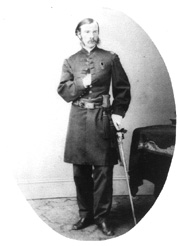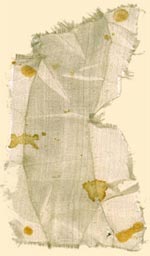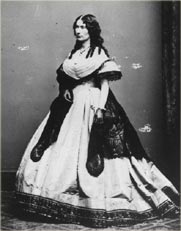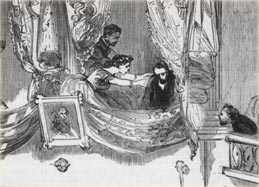

Back inside the theatre, Mary Lincoln cradled her unconscious husband's head and screamed.
Charles Leale, a young army surgeon, was the first to reach the box and offer his assistance:
When I entered the box, Mr. Lincoln was sitting in a high backed armchair with his head leaning towards his right-side and which was supported by Mrs. Lincoln who was weeping bitterly...I asked a gentleman near by to cut his coat and shirt off that shoulder...and I saw that there was no wound there...I then examined his head and soon discovered a large firm clot of blood...[I] passed the little finger of my left hand directly through the perfectly smooth opening made by the ball...When I removed my finger which I used as a knife an oozing of blood followed and he commenced, to show signs of improvement. (GOOD 60-61)
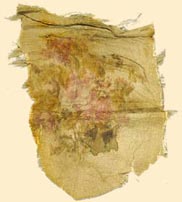
Miss Keene was known for her ability to take charge. A critically acclaimed actress and the first woman theatre manager in the United States, Keene is credited with establishing New York City as the leading theatrical center in the country. Keene told reporters that she entered the presidential box to comfort Mrs. Lincoln and held Lincoln's head in her lap, although eyewitness accounts are contradictory. Clara Harris maintained that "Laura Keene did not enter the box from first to last;" Dr. Leale confirmed Keene's version. (BRIGGS; LEALE)
Miss Laura Keene... took the dying President's head in her lap, bathed it with water she had brought, and endeavored to force some of the liquid through the insensible lips. The locality of the wound was at first supposed to be in the breast. It was not until after the neck and shoulder had been bared, and no mark discovered, that the dress of Miss Keene, stained with blood, revealed where the ball had penetrated. The chief magistrate of 30,000,000 people - beloved, honored, revered - lay in the pent-up closet of a play house, dabbling with his sacred blood the robes of an actress. (TOWNSEND)
